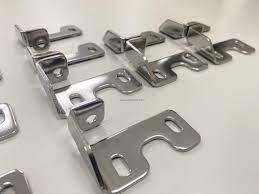The Ultimate Guide to Rigging: Techniques, Applications, and Geotextile Integration
Rigging is the art and science of securing, supporting, and manipulating heavy loads using ropes, cables, chains, and other specialized equipment. From construction sites to entertainment venues, and maritime operations to rescue missions, rigging plays a pivotal role in various industries. This guide delves into the nuances of rigging, its applications, and the crucial integration of geotextile materials in certain scenarios.



What is Rigging and Why is it Important?
Rigging refers to the system of ropes, cables, and hardware used to support and move heavy objects safely and efficiently. Its importance lies in facilitating tasks that would otherwise be impractical or impossible without the proper equipment. In construction, rigging aids in lifting massive structures or materials to desired heights. Similarly, in entertainment, it’s crucial for stage setups and suspending equipment. Rigging ensures safety and precision in operations involving substantial loads.
What are the Key Techniques in Rigging?
Several techniques form the backbone of rigging operations:
- – Slinging and Hitching: Using slings and hitches to secure loads, distributing weight evenly.
- – Lifting and Lowering: Employing winches, cranes, or pulleys to hoist and control heavy objects.
- – Anchoring and Bracing: Properly securing rigging points and stabilizing loads for safety.
- – Knots and Splicing: Mastery of knots and splices for creating secure connections between ropes and cables.
Where Does Geotextile Come into Play in Rigging Applications?
Geotextiles are synthetic materials used in civil engineering and construction for their strength, durability, and filtration properties. In rigging, geotextiles find application in scenarios involving soil stabilization, erosion control, or reinforcement of load-bearing structures. They play a pivotal role in ground reinforcement under heavy loads, preventing soil erosion during rigging operations, and providing a stable base for rigging setups.



What Are Some Notable Applications of Rigging?
Rigging finds extensive applications across diverse industries:
- – Construction: Lifting and placing heavy materials, steel structures, or equipment.
- – Entertainment: Rigging stages, lighting, sound systems, and suspending props.
- – Maritime Operations: Hoisting cargo, securing vessels, and supporting marine structures.
- – Rescue Missions: Rigging systems for search and rescue operations in challenging terrains.
In conclusion, rigging stands as a fundamental aspect of numerous industries, enabling the safe handling and movement of heavy loads. The integration of geotextiles further enhances safety and stability in various rigging applications, particularly in scenarios involving soil reinforcement and erosion control. Understanding the techniques and applications of rigging is vital for ensuring efficient and secure operations across different sectors.




